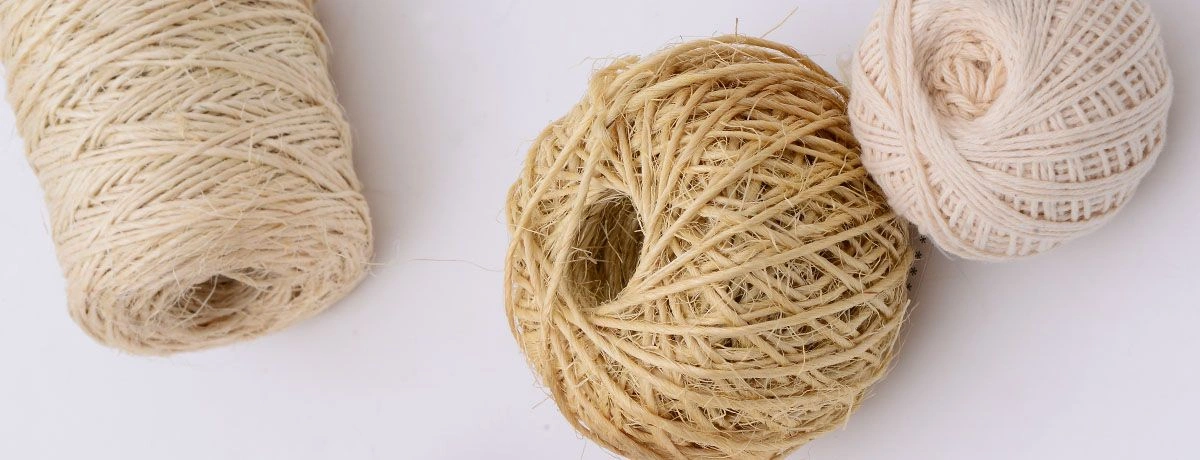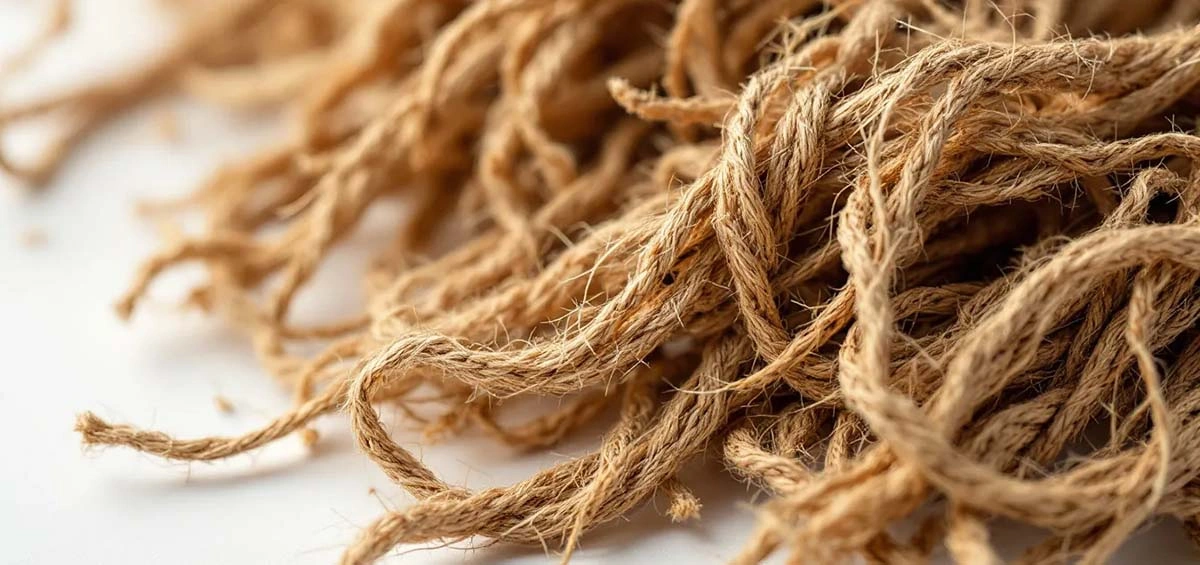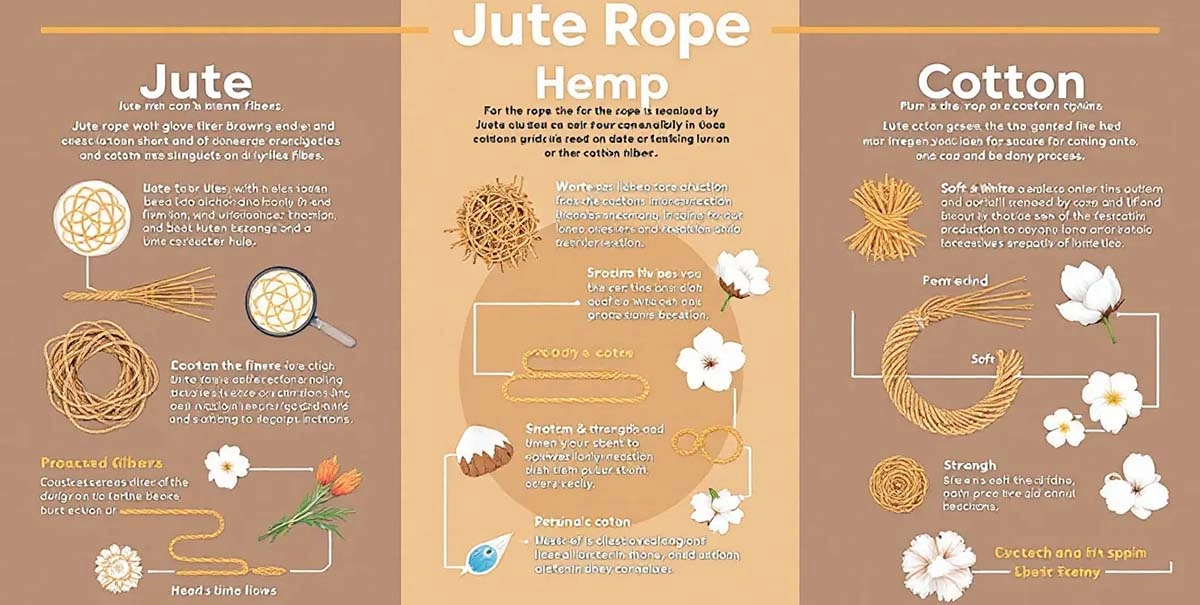What Is Jute Rope Made Of? Simple Guide to Natural Fiber Rope

Jute rope is made of fibers from the jute plant, primarily grown in India and Bangladesh. These natural fibers provide strength and durability. In this guide, learn about what is jute rope made of, its making, features, and uses.
Key Takeaways
-
Jute rope is made from the fibers of the jute plant, primarily produced in India and Bangladesh, known for its strength, durability, and eco-friendliness.
-
The manufacturing process involves harvesting, retting, drying, spinning, twisting, and braiding the jute fibers into rope, with attention to the twist’s direction and tightness to enhance strength.
-
Jute rope is versatile, used in various applications from agriculture to home decor, and is known for its rustic appearance, affordability, and biodegradable nature, making it a sustainable choice.
Understanding Jute Rope

Jute rope is crafted from the fibers of the jute plant, a tropical plant thriving primarily in India and Bangladesh. The use of jute dates back to ancient times, and today, these two countries remain the leading producers of jute fiber, contributing around 2.7 million tonnes annually. The jute plant not only provides fibers for rope but also finds use in textiles and other industries, making it an incredibly versatile material.
The Jute Plant
The jute plant, belonging to the genus Corchorus, primarily includes two jute species: white jute (Corchorus capsularis) and tossa jute (Corchorus olitorius). White jute, often referred to as Golden Fiber, is prized for its superior quality, while tossa jute is preferred for its lighter, stronger fibers ideal for rope making.
This plant thrives in the warm, humid climates of southern Asia, particularly in regions like West Bengal and Bangladesh. The jute plant requires alluvial soil and abundant water, flourishing in temperatures between 20 to 40 °C, making it a sustainable and renewable source of natural fiber in a wet environment.
Jute Fibers
Jute fibers, often ranging from off-white to brown, are known for their strength and durability. Tossa jute, in particular, produces long, strong fibers with high tensile strength, making it a preferred choice for rope production. These natural fiber derived fibers are valued not only for their durability but also for their eco-friendly nature, as they are biodegradable and derived from a renewable resource.
This combination of strength, flexibility, and sustainability makes jute fibers an excellent material for crafting ropes and other products.
The Manufacturing Process of Jute Rope
The journey of jute from plant to rope involves several meticulous steps:
-
Harvesting the mature jute plants.
-
Bundling the harvested plants.
-
Soaking the bundles in water, a process known as retting, which helps to loosen the fibers from the woody core of the jute stems.
Once the fibers are extracted, they are dried and spun into yarns, which are then twisted and braided to form the final jute rope.
Retting and Extraction
Retting is a crucial step in the production of jute rope. It involves soaking the harvested jute stems in water to separate the fibers from the woody core. The bundles are left to soak for several days, allowing the fibers to loosen.
After retting, the fibers are extracted by stripping away the non-fibrous matter, a process that leaves behind long strands of jute fiber ready for further processing.
Drying and Spinning
Once the fibers are extracted, they undergo a thorough washing to remove any remaining non-fibrous material. The cleaned fibers are then dried and spun into yarns, a process that involves aligning the fibers and twisting them to create a continuous thread. Proper alignment during spinning is essential for produce fibers strong, consistent yarns. This can be done manually or with the help of machinery.
The resulting jute yarns are then ready to be twisted into ropes.
Twisting and Braiding
The final stage in jute rope production involves twisting and braiding the spun yarns. The direction and tightness of the twist are crucial, as they determine the rope’s strength and flexibility. A looser twist creates a smoother and more flexible rope. On the other hand, a tighter twist improves durability.
The strands are counter-twisted to secure the structure, resulting in a robust and reliable jute rope.
Key Characteristics of Jute Rope
Jute rope is renowned for:
-
Its unique combination of strength, durability, and eco-friendliness
-
Offering excellent grip due to its distinctive texture
-
Being more durable and tear-resistant compared to some other natural fibers
-
Its rustic appearance and affordability, making it a popular choice for a variety of applications.
Strength and Durability
Jute rope’s strength comes from its natural fiber composition, primarily cellulose and lignin, which provide high tensile strength and durability. When spun into multi-strand ropes, jute fibers become even stronger, though the number of plies can affect flexibility.
This balance of strength and flexibility makes jute rope suitable for many scots uses.
Biodegradability and Eco-Friendliness
One of the key characteristics of jute rope is its eco-friendliness, which includes:
-
Being a biodegradable material
-
Being a renewable resource, making it a sustainable alternative to synthetic ropes
-
Requiring less water and fewer pesticides than cotton, further enhancing its environmental benefits.
Additionally, jute’s affordability adds to its appeal as an economical choice and sustainable choice.
Flexibility and Texture
Jute rope is known for its coarse texture, which provides a rustic and natural look suitable for decorative purposes. The number of yarns twisted together, or more plies, impacts the rope’s flexibility and strength.
Despite its coarse texture, jute rope can be quite flexible, making it versatile for various applications, including crafts and home decor.
Applications of Jute Rope
Jute rope finds applications across various industries due to its strength, flexibility, and eco-friendly nature. It is commonly used in:
-
Agriculture
-
Gardening
-
Home decor
-
Crafts
-
Packaging
-
Storage
Whether for practical purposes or decorative uses, jute rope’s versatility makes it an invaluable material.
Agriculture and Gardening
In agriculture and gardening, jute rope is a preferred material because it does not harm plants, making it ideal for tying and supporting agricultural products.
Its applications include tying plants, sectioning crops, and constructing hanging planters, demonstrating its versatility in gardening tasks.
Home Decor and Crafts
Jute rope’s tan or brown color and coarse texture give it a rustic appeal, making it popular for home decor and crafts, including burlap projects. It is used to wrap items, create DIY projects, and even substitute for ribbon due to its affordability and biodegradability.
Additionally, fine jute threads can mimic imitation silk, showcasing its versatility in creating various decorative items.
Packaging and Storage
Jute is an excellent choice for sustainable jute packaging due to its biodegradable nature, environmentally friendly properties, and its classification as a natural material. It is available for wholesale, making it accessible for various packaging bags needs.
Jute ropes’ strength and durability ensure that it securely holds and stores items, making it suitable for packaging and storage applications.
Comparing Jute Rope with Other Natural Fibers

Jute rope is often compared to other natural fibers like hemp and cotton. While each has its unique properties, understanding the differences helps in selecting the right material for specific applications.
Jute’s affordability and eco-friendliness make it a popular choice, but its strength and durability may vary compared to other fibers like hemp and cotton.
Jute vs. Hemp
Hemp rope is generally stronger and more durable than jute rope, making it suitable for heavy-duty applications. However, jute rope offers a more traditional and rustic aesthetic. Hemp’s natural resistance to pests and mold gives it an edge in durability and longevity, while jute remains a cost-effective alternative for less demanding uses.
Jute vs. Cotton
Compared to cotton, jute is stronger and more durable. Unlike jute, cotton rope is softer and smoother, while jute provides better grip and friction for knot tying. The main differences between jute and cotton highlight their unique properties.
Jute’s stiffness and coarse texture make it suitable for applications requiring a more robust material, whereas cotton’s soft texture is preferred for comfort.
How to Care for Jute Rope
Proper care of jute rope ensures its longevity and effectiveness. Key care instructions include:
-
Store the rope in a dry, dark, and cool place with low humidity to prevent deterioration.
-
Coil the rope lightly.
-
Avoid folds to help maintain its flexibility.
Keeping jute rope away from moisture and sunlight is essential to prevent shrinking and rotting.
Conditioning Jute Rope
Conditioning jute rope can enhance its flexibility and usability through the following methods:
-
Wet treatment to make the rope more flexible
-
Regular use, which naturally conditions the rope over time
-
Applying mineral oil to prevent the rope from becoming brittle
However, care must be taken when using heat for conditioning to avoid toxic vapors.
Preventing Fraying
Preventing fraying is crucial to maintaining the integrity of jute rope. Effective methods include:
-
Whipping, which involves wrapping twine around the rope’s end
-
Splicing, which creates a secure eyelet
-
Using end caps to stop the fibers from unraveling, ensuring the rope’s longevity.
Summary
Jute rope, crafted from the natural fibers of the jute plant, offers a combination of strength, durability, and eco-friendliness that makes it a versatile material for various applications. From agriculture and gardening to home decor, crafts, and packaging, jute rope’s unique characteristics make it an invaluable resource. Its historical significance and modern-day relevance highlight the importance of sustainable materials in today’s world.
As we continue to seek environmentally friendly alternatives, jute rope stands out as a practical and economical choice. Understanding its properties, manufacturing process, and applications allows us to appreciate the benefits of this remarkable natural fiber. Embrace the versatility of jute rope and consider its sustainable advantages in your next project.
Frequently Asked Questions
What is jute rope made of?
Jute rope is made from the natural fibers of the jute plant, specifically the species Corchorus capsularis and Corchorus olitorius. This eco-friendly material is valued for its durability and strength.
How is jute rope manufactured?
Jute rope is manufactured by harvesting jute plants, retting the fibers through soaking, extracting and drying them, then spinning the fibers into yarns, which are twisted and braided to form the final rope. This process ensures strong and durable jute rope suitable for various applications.
What are the key characteristics of jute rope?
Jute rope is characterized by its strength, durability, eco-friendliness, flexibility, and coarse texture, making it ideal for a wide range of applications. These qualities ensure that it meets both functional and environmental needs effectively.
How does jute rope compare to hemp and cotton ropes?
Jute rope is more affordable and eco-friendly compared to hemp and cotton ropes, but it lacks the durability and strength of hemp, while cotton rope offers a softer texture. For applications where price and sustainability are priorities, jute is a suitable choice, though it may not withstand harsh conditions like hemp.
How should I care for jute rope?
To care for jute rope, store it in a dry, dark, and cool environment, coiling it lightly to prevent stiffness. Avoid exposure to moisture and sunlight to prevent rotting and prolong its lifespan.
Contact MH
MH offers jute ropes. Please contact us for more details or inquiries. We're here to help!


